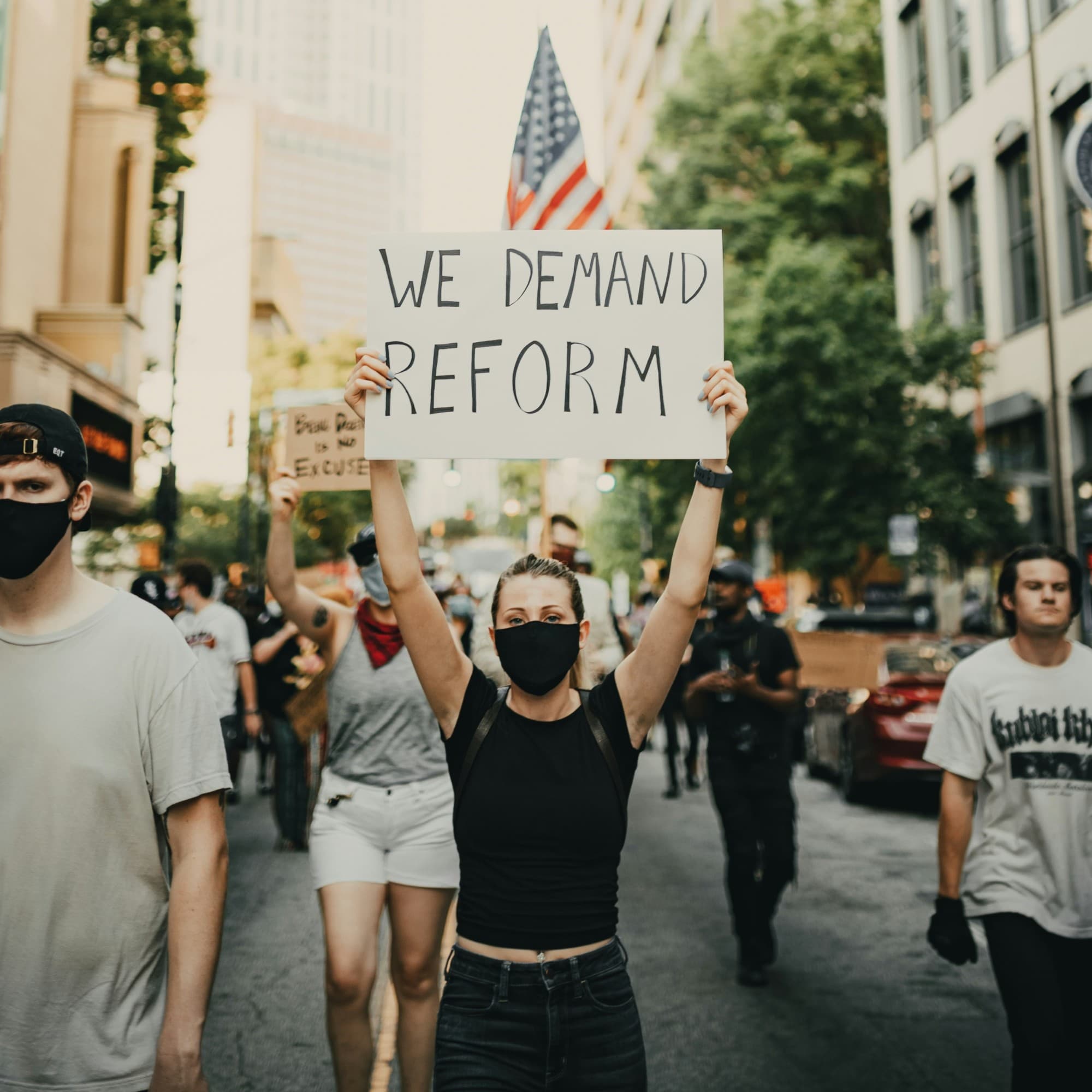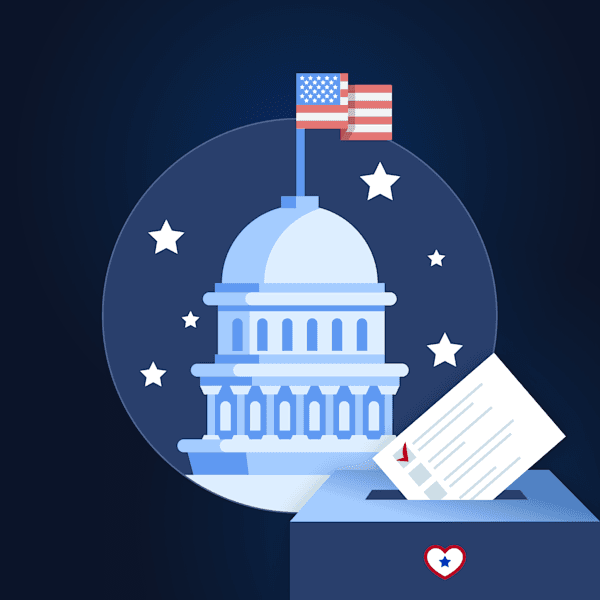
What Does Progressive Really Mean in Politics?
For some, the word “progressive” calls to mind active political engagement and powerful ideas for reform. Others view it as a dangerous ideology that will ruin society.
Let’s dive into what the word “progressive” truly means in politics, and find out what sets it apart from other political labels like "Democrat," "conservative," "moderate," and "liberal." We'll also touch on the historical roots of progressivism and its place within the current landscape of minor progressive parties and the independent movement as a whole.
What Is Progressivism?
At its most basic, progressivism is a political ideology that encourages reform, growth, and an active government.
Whatever we may hear in the media or during political discussions, progressives don’t necessarily belong to any one political party or ideology beyond one that stands for positive change from the status quo.
The term "progressive" has a rich historical context. In the early 20th century, the Progressive Movement in the United States began as a means of addressing problems stemming from the Industrial Revolution, including poor working conditions, industrial monopolies, and urban squalor.
That era's progressives aimed to reform society through government intervention, the regulation of industries, and the promotion of social welfare programs. The movement also figured prominently in the U.S. foreign policy of the times.
Over time, the meaning of "progressive" has evolved. While it still encompasses a belief in the need for reforms to address social and economic inequalities, today's progressive movement places a stronger emphasis on issues like climate change, racial justice, and healthcare as a human right.
The focus has also shifted from merely reforming existing political systems to questioning — often actively seeking — to overhaul those systems entirely.
Progressivism goes beyond individual policy positions to include independents, minor parties, and the disaffected within the political establishment. Well-known progressives include independents like Bernie Sanders as well as Democrats, with Alexandria Ocasio-Cortez as a modern standard bearer. The movement has also included Republicans, with former members as diverse as Theodore Roosevelt and Pat Buchannan leaving the GOP to go their own way against the political establishment.
Progressive vs. Democrat
While often intertwined in American political discourse, "progressive" and "Democrat" are not synonymous. The Democratic Party is one of the two major political parties in the United States, with a broad tent that encompasses a range of political beliefs from moderate to liberal.
Progressives are a specific faction within this broad spectrum that advocates for reforms that extend beyond the conventional liberal agenda. Progressives also include voters and leaders who do not affiliate with the Democratic Party. Progressives can be independent, and can belong to third parties such as the Green Party.
Whatever party they most align with, progressives often emphasize issues like income inequality, healthcare for all, climate change, social justice, and a more assertive approach to regulating large corporations. Progressives push for a more aggressive transformation of society as a means of addressing systemic inequalities, and they often advocate for policies that they believe will lead to a fairer, more equitable society.
While many progressives operate within the Democratic Party, progressive ideology transcends party lines, and not all Democrats identify as progressive.
Minor Parties and Independents
The political landscape in the United States is not limited to the binary of Democrats and Republicans. Various minor parties focus on progressive politics, such as the Green Party, which emphasizes environmental issues, social justice, and grassroots democracy.
There have even been several iterations of a Progressive Party in the United States. The first was launched by former Republican president Theodore Roosevelt in 1912, the second in 1924 under Robert La Follette, and the third in 1948 under Henry Wallace. Although each version of the Progressive Party had varied policy priorities, the wider beliefs in social equality, economic equity, and worker’s rights prevailed.
Through the Progressive Movement in the United States, women gained the right to vote and a national income tax was created, with the intention of shifting the burden of paying for government spending priorities from the working class to the wealthy elites. Many policy priorities of the movement were then folded into the New Deal policies of President Franklin D Roosevelt (FDR), cousin of Theodore, during the 1930s. The movement re-emerged again in 1948 under FDR’s former VP, Henry Wallace, in opposition to the policies of President Harry S. Truman.
Independents, too, can be progressive, operating outside the traditional party system to advocate for progressive policies. There is a high level of diversity within progressive politics.
Progressive vs. Other Political Labels
Progressive politics often contrast with a wider conservative ideology, which generally advocates for maintaining the traditional social order. Conservatives tend to be skeptical of rapid or extensive government intervention in the economy or the increased spending that might be necessary to enact progressive policies. However, they often share many progressives' belief in individual autonomy and liberty.
Moderates or centrists typically seek a middle ground between the political extremes, advocating for policies that draw from both conservative and liberal ideas. Progressives, however, sometimes view such positions as insufficiently ambitious in addressing systemic inequalities and climate change.
The term "liberal" has historically been associated with a broad range of beliefs, advocating for individual freedoms and incremental reforms within the capitalist system. While progressives share some common ground with liberals, especially on social issues, progressives tend to advocate for a more rapid systemic transformation, particularly in the areas of economic policy and social welfare.
Examples of Progressive Campaigns
Recent years have seen a resurgence of progressive politics, particularly within the Democratic Party. Notable campaigns include those of Bernie Sanders and Elizabeth Warren, who have both championed progressive policies like Medicare for All, the Green New Deal, and substantial reforms to the financial sector.
Alexandria Ocasio-Cortez and other young Democrats represent a younger generation of progressives in Congress who are pushing for comprehensive climate action, social justice, and economic reforms. There’s also a Progressive Caucus in Congress, whose members pledge to support a range of progressive legislative policies.
Outside of the two-party establishment, Ross Perot ran for president in 1992 and 1996 as an independent and later formed the Reform Party. His goal was to represent working-class Americans who felt left behind by the establishment. Perot was termed a “populist” by the media, and he advocated for many progressive policies, including:
LGBTQ+ rights
Increased funding for AIDS research
Increased taxes on the wealthy
Stricter gun control legislation, including an assault weapons ban
Activist and socio-political commentator Cornel West has long advocated for progressive policies and has run for office as both an independent and third-party candidate. Jill Stein, the current head of the Green Party, is a well-known progressive who will be running for president under that party’s banner for the third time in 2024.
The Forward Party was formed in 2023 by Andrew Yang, a former Democrat, and Christine Todd Whitman, a former Republican governor. Although the party self-identifies as “centrist,” it espouses various progressive policies and principles like diversity and economic equity.
These campaigns and politicians have brought progressive ideas to the forefront of national debate. They illustrate a growing appetite among Americans for policies that address systemic inequalities and climate change more aggressively.
Final Thoughts
Understanding what progressive really means in politics requires acknowledging the term's historical roots, its distinction from other political labels, and the diversity within the movement itself.
Progressivism today represents a commitment to systemic change, advocating for policies that address inequalities, environmental issues, and social justice more boldly than traditional liberal or moderate positions. The movement's inclusive nature, welcoming both party affiliates and independents, alongside its presence in minor political parties, underscores the wide-ranging appeal of progressive ideas.
As the political landscape continues to evolve, the progressive movement remains a vital force in shaping the future of political discourse and policy in the United States and beyond.
Want to learn more about political affiliations and parties? Explore more resources related to political ideologies and parties here, or learn more about the independent movement’s role in the political landscape here.

